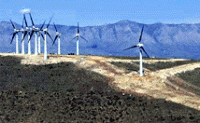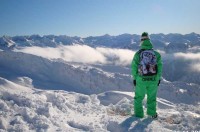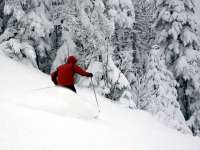By Quirin Schiermeier, Nature
As international climate talks began last week in Poland, the United Nations (UN) suspended the work of the main company that validates carbon-offset projects in developing countries, sending shockwaves through the emissions-trading business. Environmental groups have criticized the social impact of the Xiaoxi hydropower station. Based in Oslo, Det Norske Veritas has in the past four years validated and certified almost half of the 1,200 projects approved under the 1997 Kyoto Protocol’s Clean Development Mechanism (CDM).
At its meeting on 28 November in Poznan, the CDM’s executive board temporarily withdrew Det Norske Veritas’s accreditation after a spot check carried out in early November at the firm’s headquarters revealed serious flaws in project management. The board did not specify which projects are affected, but cites problems with the company’s internal auditing processes, and says that one of its staff members was verifying CDM projects without proper qualifications. As a result, “validation activities could not be demonstrated to be based on appropriate sectoral expertise”, the board reports.
Det Norske Veritas is a risk-assessment and consulting company with about 8,000 employees in more than 100 countries. Its 2007 revenue was 8 billion Norwegian krone (US$1.1 billion). It was the largest of 19 companies entitled to validate and certify projects proposed under the CDM, which aims to cut greenhouse-gas emissions by promoting climate-friendly energy technologies, such as wind or hydropower.

Certified emission-reduction credits from verified projects can be traded and sold on the emissions market, helping industrialized countries to meet their emissions-reduction targets under the Kyoto Protocol. However, only environmentally sustainable projects that would demonstrably not go ahead without additional revenue from sales of these credits are meant to be approved. See full story here. As one fellow scientist so aptly noted “how can a concern set up on fradulent premises to carry out a fraudulent mission be suspended for fraudulent practices?”
Deutsche Welle
Chancellor Angela Merkel has been keen to promote herself as a tough actor on climate change, but with a new EU climate deal in the making, she’s issued a new caveat: It must not jeopardize German jobs. With the recession tightening its grip on the German economy, Merkel is betting that job reassurance is more important to the average worker than being a pioneer in tackling climate change. On Monday, she vowed to fight any EU climate deal that could jeopardize German jobs.

Speaking ahead of a European Union summit starting Thursday in Brussels, Merkel told the top-selling Bild newspaper: “It must not take decisions that would endanger jobs or investments in Germany.” “I will make sure of that,” she added.
During her presidencies last year of both the EU and the G8, Merkel was sharpening her profile as the “climate chancellor.” She traveled to Greenland to draw attention to melting ice floes and promised that Europe would lead the way on climate issues by cutting greenhouse gas emissions by 20 percent by 2020 (compared to 1990 levels.) Now, though, the financial crisis and domestic worries are causing her to revise her message. According to an unpublished report by the economy ministry, Germany risks losing more than 100,000 jobs if the EU were to force industries to pay for pollution rights that are currently free.
Another study by the Muenster-based EEFA research institute pointed to increased costs stemming from reforming pollution rights, making Germany’s key industrial sector less competitive and threatening up to 300,000 jobs by 2020. Environment activists were outraged. Representatives from Germany’s strong environmental lobby said they were “horrified” by the chancellor’s apparent U-turn. “Last year, the chancellor put herself about as the climate chancellor, now she’s fighting to ensure that German industry keeps rights to pollute for free,” Oxfam Germany’s spokesman Jan Kowalzig said in a statement Monday.
Under the EU climate deal, companies would in future have to purchase rights to pollute. And while Berlin wants most emissions allowances to be free for heavy industry, the EU plans would see the percentage auctioned off gradually increased up to 100 percent in 2020, when every ton of CO2 will have to be bought. French President Nicolas Sarkozy is hoping to clinch a deal on climate change before France’s EU presidency ends on January 1. Most of the resistance comes from former East bloc countries, many of which rely on heavily-polluting coal-fired plants for energy. Sarkozy said there ahd been progress during talks on Saturday with leaders meeting in the Polish city of Gdansk. “We are not at the end of the discussion, but we have progressed,” he said. An EU climate deal would brighten prospects for a UN climate deal to be agreed late next year in Copenhagen. Read more here.
UK Snowboard Club
Gore is heading to Europe for the UN climate debacle. On cue mother nature strikes again.
20 year record snowfall in Dolomites enough to last all season. Some Swiss train services cancelled due to excess snow. Still more heavy snow in the Pyrenees. More snow for Scotland. www.Skiinfo.com is following still more heavy snowfalls across Europe over the past 48 hours, with much more snow in other parts of Europe and many areas of North America too. The snowfall has been so great that it has closed roads, brought down power lines and even led to the cancellation of some Swiss rail services this week.One of the greatest beneficiaries are the Italian Dolomites where 150cm (five feet) has fallen at Cortina in a 48 hour period up to Monday, with snow still falling. Alessandro Fregni of Skiinfo.com’s Italian office commented, “In three days ski areas have seen almost as much snowfall as for the whole winter last year.”
The snow has arrived with perfect timing for the ski resorts who are seeing a boom in ticket sales at a time of economic uncertainty. Alessandro believes the snow is enough to last all season and will also mean resorts can save money by not needing to use snow making equipment. However the snow is causing practical problems for both locals and those wanting to reach the snow with almost every pass in to the Dolomites closed on Monday and many villages without electricity. However the situation will be resolved quickly once the snow stops falling.
It was a similar if slightly less dramatic picture to the north where competitors at the annual season opening Santa Claus World Championships in Samnaun had difficulty getting to and from the event as Swiss public transport in the area struggled to cope with heavy snowfall there. On Monday rail services were cancelled in the area of Eastern Switzerland due to the snow. “We should have used their magic sleighs.” joked a bemused competitor after missing his flight home as a result.Most other Swiss resorts have great cover and more new snow. Skiinfo issued powder alarms in the past week for Skiinfo with 70cm (28 inches) and Davos 53cm (17 inches) of fresh snow each. Many major resorts now have snow depths of 2-3 metres (7 - 10 feet). In Austria the snow cover is also superb with Heiligenblut the biggest recipient of the week’s latest dump, receiving a metre (40 inches) of powder in the past seven days. Many of the open French ski areas have reported at least a foot of new snow in the past week. Several have much more including Les Arcs, with 80cm (32 inches). New openings this weekend include Les Orres, Chamrousse, L e Grand Bornand, Isola 2000 and Montgenevre. Alpe D’Huez and Courchevel will be fully open and Megève partly open.
It looks like the ski areas in the Pyrenees and elsewhere in Spain which dominated snowfall news in November with record pre-season accumulations leading top early openings of ski areas in the region will continue in to December, as the snow keeps falling.

Baqueria Beret in the Pyranees.
A new cold front has brought still more fresh powder to Spain (Formigal and Sierra Nevada have both received 70 cm/28 inches more powder in the past week) all the ski resorts in Spain will open for a three day holiday weekend. For Spanish skiers and boarders the Purísima Feast on December 8 is a must every year and represents the official opening of the winter season.On the French side of the range Cauterets opened last weekend with 80% of runs available on opening day and up to 150cm (five feet) of snow. Elsewhere in Europe conditions continue to be very good in Scandinavian countries too. Norway’s Hemsedal currently has 65cm (over two feet) of snow on its slopes, with Bjorli registering the greatest snow depth at present with 100 cm (40 inches). The country’s ski areas have received up to 38cm (15 inches) of new snow in the last week with Skiimnfo.com issuing a powder alarm for Trysil, the largest resort in Norway. The snowfall makes it possible for Trysil to open more slopes and lifts for the upcoming weekend, said Jan Linstad, Trysil ski area]s manager. In Eastern Europe it’s a more mixed picture with some warm temperatures limiting cover. However Slovenian areas are open and Bansko has opened in Bulgaria with largely machine made snow.
In Scotland The Lecht re-opened last week before closing for a second time in November as the snow thawed. However more snow fell yesterday (Tuesday, December 2), temperatures remain well below freezing and heavy snow is forecast for tomorrow, Thursday (December 4), raising hopes of a weekend re-opening. In North America the picture has improved dramatically in Colorado, just as it did this time last year before a meteoric snowfall season in which several resorts set record snowfall figures after a warm November 2007. One of the best reports is from Vail which has had 63cm (25 inches) of snow in the past week. Nearby Copper Mountain has also been able to open its Superpipe, the first on the continent this season. Conditions are generally less good on the country’s West coast however with delayed openings or limited cover at many ski areas. Further north it’s a mixed picture in Western Canada with Mount Washington announcing it will delay its opening due, planned for this Friday, December 5, due to lack of snow. “We have patchy snow on the ground right now after some rainfall last weekend,” explains resort spokesperson Brent Curtain. “We need to see approximately one metre of snow on the ground before we can begin slope preparations for our opening day. “Further north still however Alyeska in Alaska has opened with a huge five metre (200 inch) base, although temperatures were reported to be as low as a seriously chilly 8F at the ski area summit on Monday. On the other side of the region one of the early openers, Marmot Basin in Alberta, which has already seen 89cm (three feet) of snow this winter, opening another five runs. On North America’s East Coast most resorts are open and in the case of resorts in states like Maine and Vermont reporting “The best start to the season for years” with a foot (30cm) or more of natural snowfall at most, topped up by the extensive snowmaking systems common in the area. Further afield Japan has had its first taste of winter too. Grand Hirafu in Niseko opened on 22nd November with things not looking promising and very little snow in the village and just a light cover of snow on the top of the resort. True to its self-proclaimed status of “powder capital of the world” however, over a metre (40 inches) of snow then fell in just three days. Visit www.skiinfo.com to sign up for powder alarms from your favourite resorts, check current snow conditions and projected snowfalls with snow finder as well as exchange news and views in the Skier’ Lounge.



